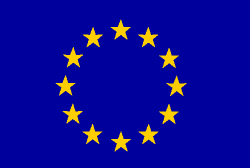Sparkle will train 27 fellows with combined skills in scientific excellence, product develop and manufacturing, in order to equip them to compete at the highest international levels and will ensure that Ireland and Europe remains of the forefront in photonics technology development and exploitation. This includes rapidly emerging disruptive technologies and market opportunities, for example AR/VR that needs higher resolution and energy efficient displays, autonomous vehicles that require photonics sensors to ‘see’, guided surgical instruments that utilise light to identify cancerous versus non-cancerous tissue, all part of an industry that is growing twice as fast as the global GDP and expected to reach $780.4 billion by 2023.
Each fellow will have a comprehensive training plan, tailored to the career path they wish to pursue. For individuals interested in an academic career, their training will include the identification and submission to funding opportunities to enable them initiate their own research programme upon completion of the fellowship. For fellows focused on a career in industry, their training will focus on translational skills, such as fabrication and commercialisation, and they will be introduced to IPIC’s wide network of industry partners to explore those that best match their ambitions.
Sparkle aims to:
• Strengthen and raise the excellence and impact of Europe’s photonics research and manufacturing activities.
• Address the expanding skills shortage in the field of photonics across Europe, specifically at experienced researcher level.
• Drive the advancement of the Athena Swan Charter, good practice in recruitment, promote equality, diversity and inclusion in STEM, and increase female participation levels.
• Provide an opportunity for industry to shape the training programme and support Ireland and Europe’s growing photonics SMEs by providing them with highly skilled trainees.
Sparkle has received funding from the European Union’s Horizon 2020 research and innovation programme under the Marie Sklodowska-Curie grant agreement No. 847652 and from Science Foundation Ireland.
